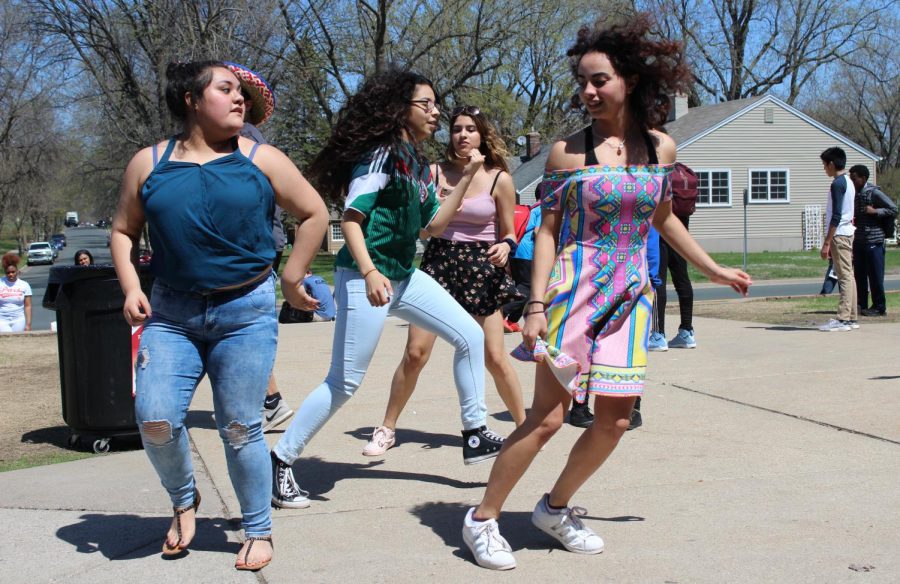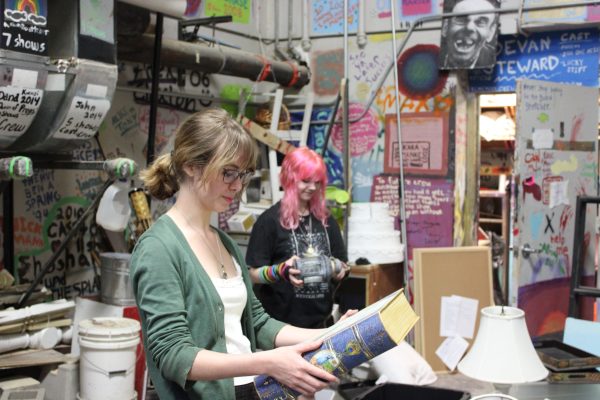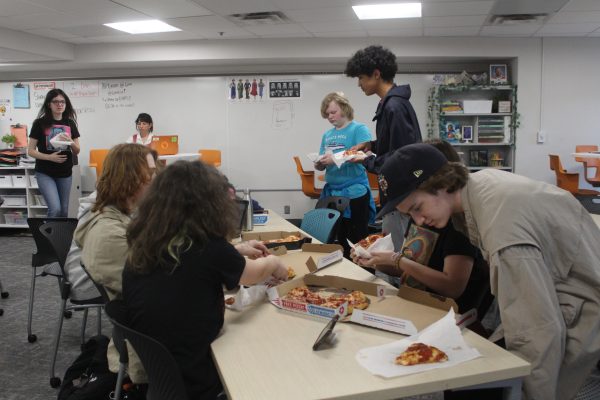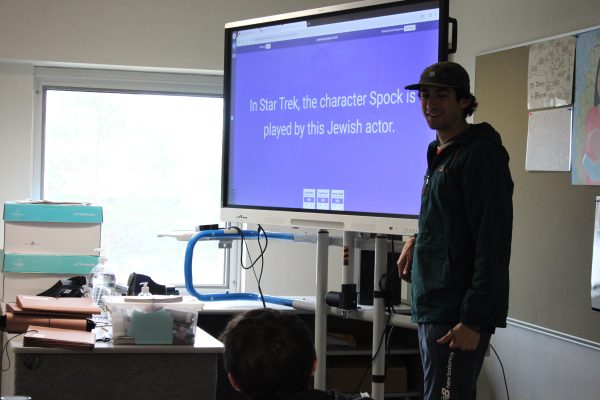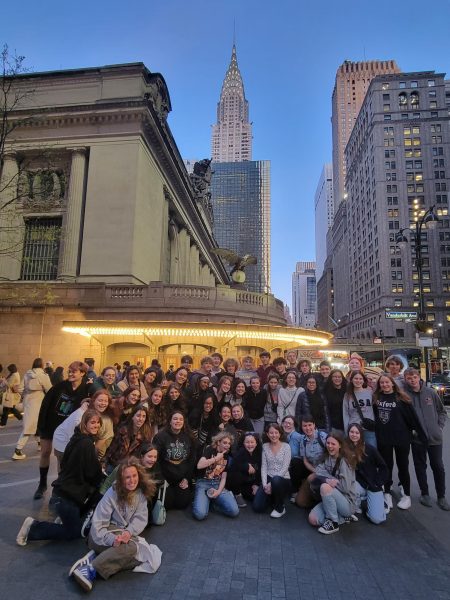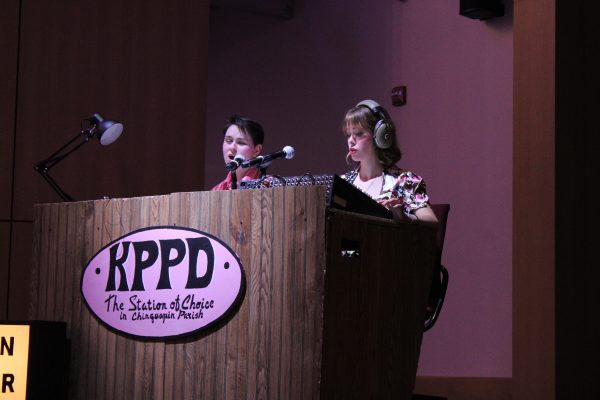Latino Student Association celebrates Cinco de Mayo
Participants express culture through festivities
Juniors Natalia Caraballo and Esmeralda Perez perform a cultural dance at the Cinco de Mayo celebration during lunch May 4.
May 10, 2018
While watching students of different cultures dance, eat and celebrate, freshman Victoria Palma said the celebration of Cinco de Mayo, May 5, was meant to bring attention to the powerful Latino community.
“We, here, have to commemorate Mexico,” Palma said. “We are a strong community, and other people can see that we are strong and we support each other.”
According to multicultural coordinator Carmen Rudin, the event in the courtyard held during lunch May 4 was organized by the Latino Student Association inviting everyone to enjoy Latino culture.
“We do it every year for the Latino Student Association,” Rudin said. “(May 5) is going to be Cinco de Mayo. Cinco de Mayo in this country is a time to celebrate culture — Latin American culture. In Mexico, it’s not a big deal over there. It’s not a really big celebration.”
Rudin said the festivities included food, music, a piñata and dancing, all with Latino culture in mind.
“We’re going to break a piñata, we have music, one of our kids with an Argentinian background made alfajores, which are cookies with coconut and milk,” Rudin said. “Also, some of the kids made tomate, which is another drink from Argentina.”
Freshman Isela Perez-Kauhaihao said she enjoyed many of the festivities at the party. She said the event inspired her to become involved in the Latino Student Association.
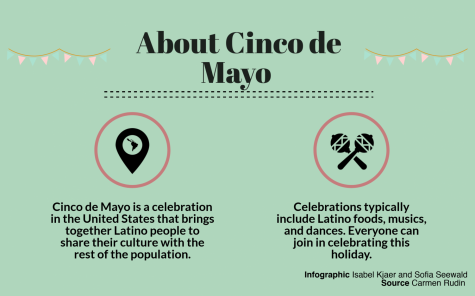
“Talking to people, the dancing and the music was a highlight for me,” Perez-Kauhaihao said. “I want to (join the Latino Student Association) because it’s good — us, Latinos, coming together and organizing something.”
Rudin said it is vital to celebrate Latino culture because it allows students to express their unique traditions, and it unifies them with the broader Latino community.
“Even though they’re the same teenagers as anybody else, they have another background. They have another kind of music, another kind of food,” Rudin said. “Here, we’re not anymore just Puerto Ricans, Ecuadorians or Guatemalans — we are Latinos. We’re united in our culture, our language and our food.”
According to Perez-Kauhaihao, the political implications of the holiday are important to her, as well as the Latino-unifying aspect of the celebration.
“Freedom for our country and freedom for Mexico is important to me,” Perez-Kauhaihao said. “Just bringing awareness (is important) and all the Latino cultures were able to come together as one.”
Rudin said the celebrations help others to see what Latino culture is all about.
“Basically, what this is, is we want to say, ‘we’re here, this is our culture and we want to share this all with you,’” Rudin said.



